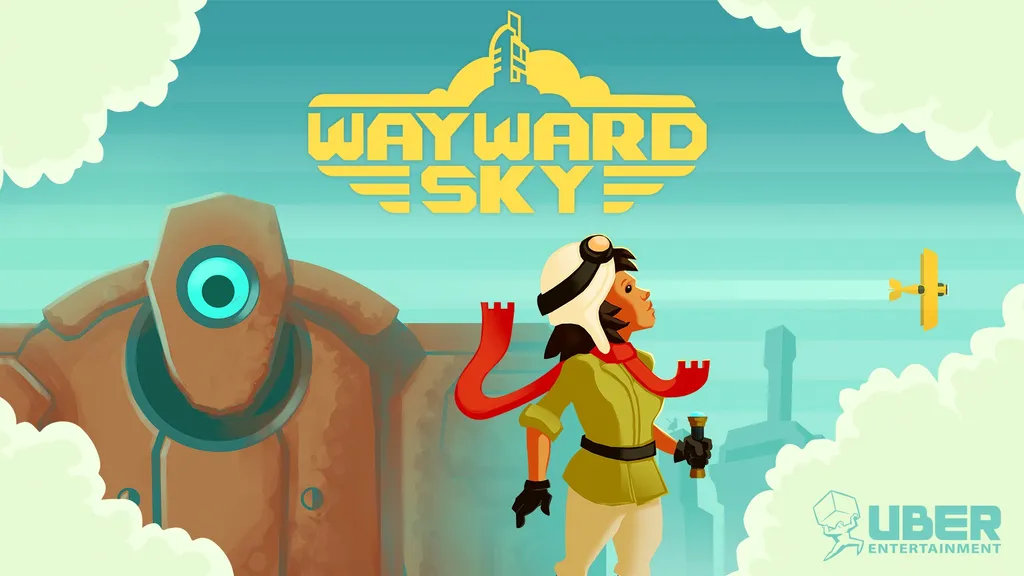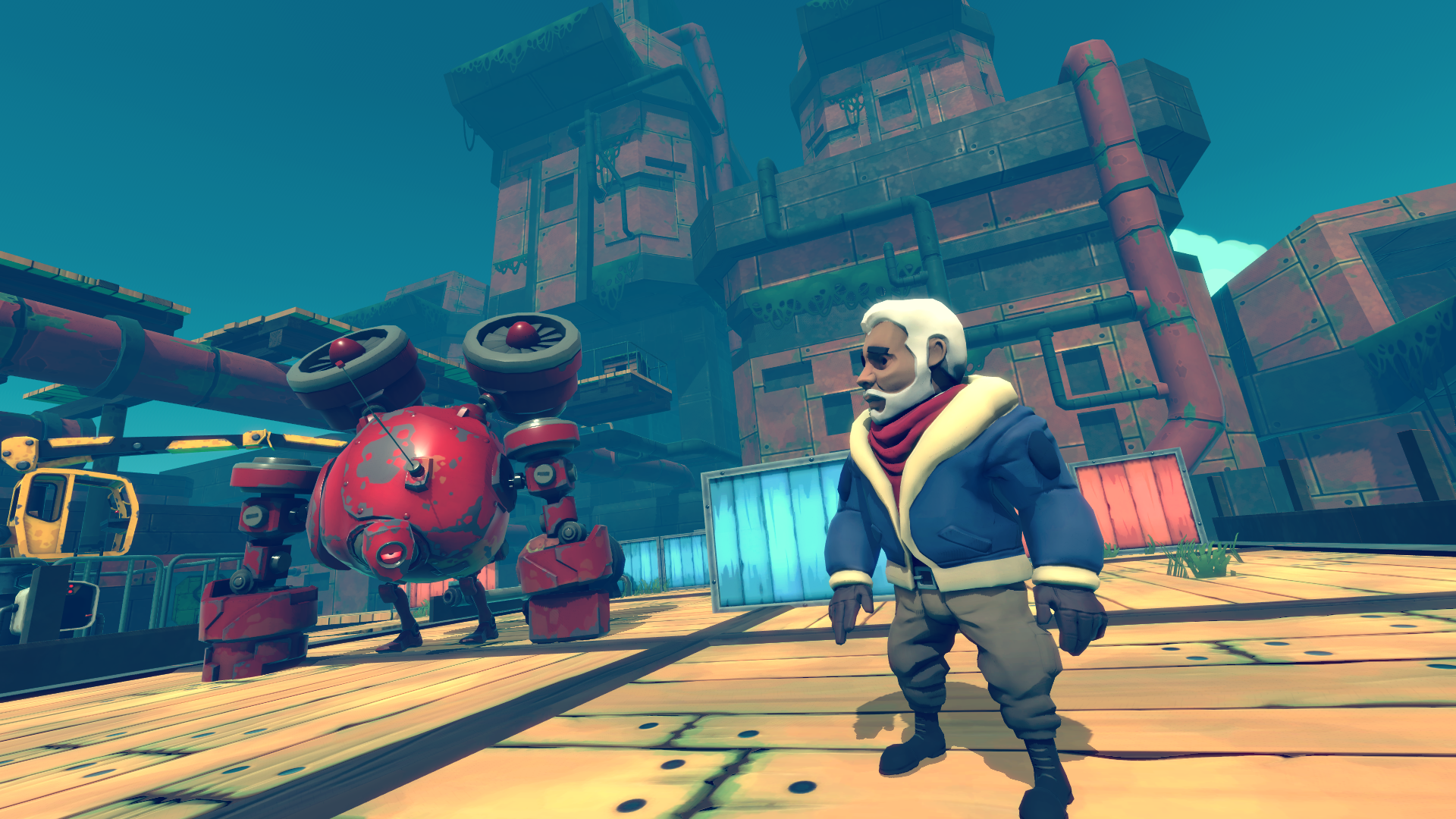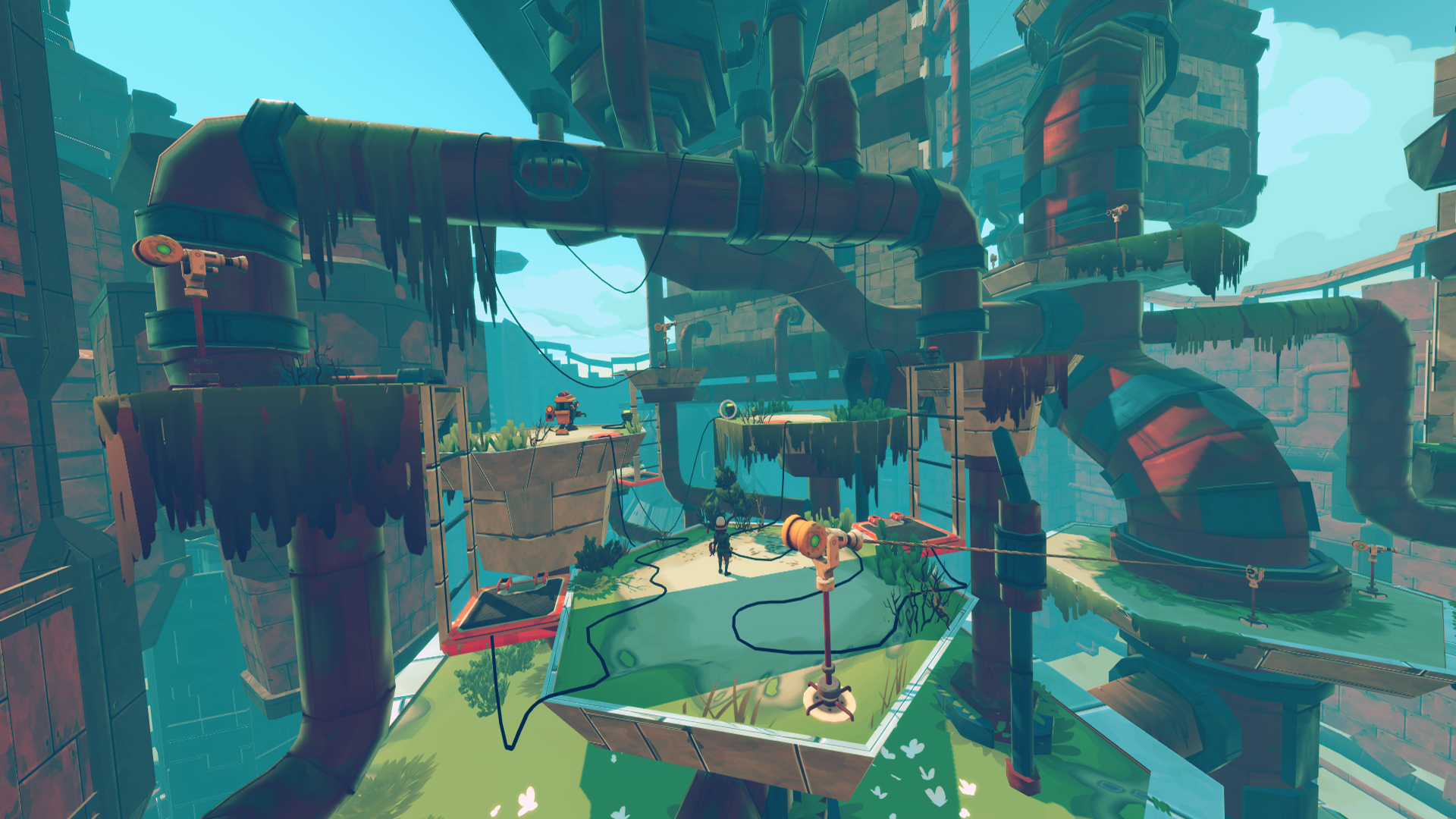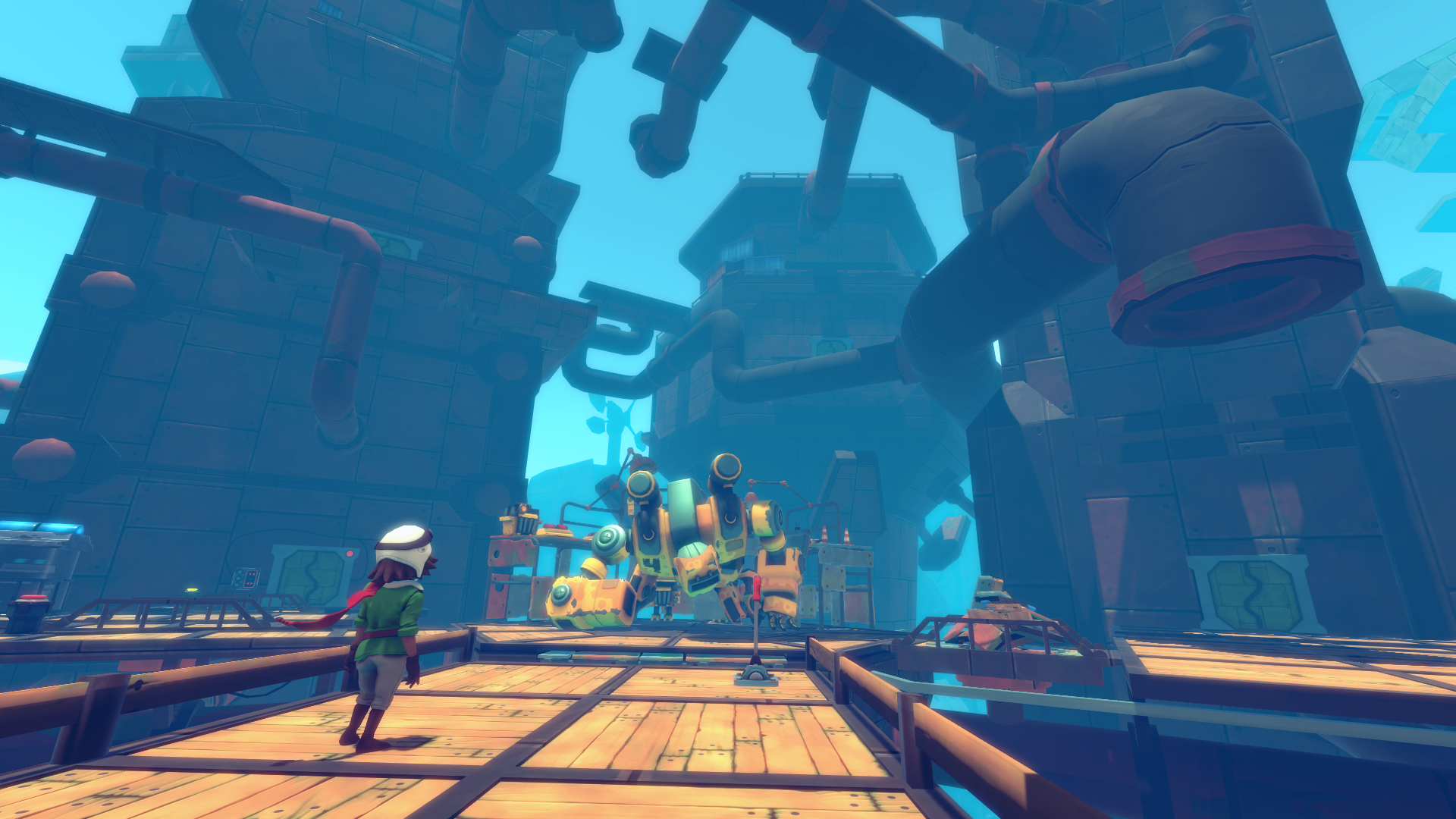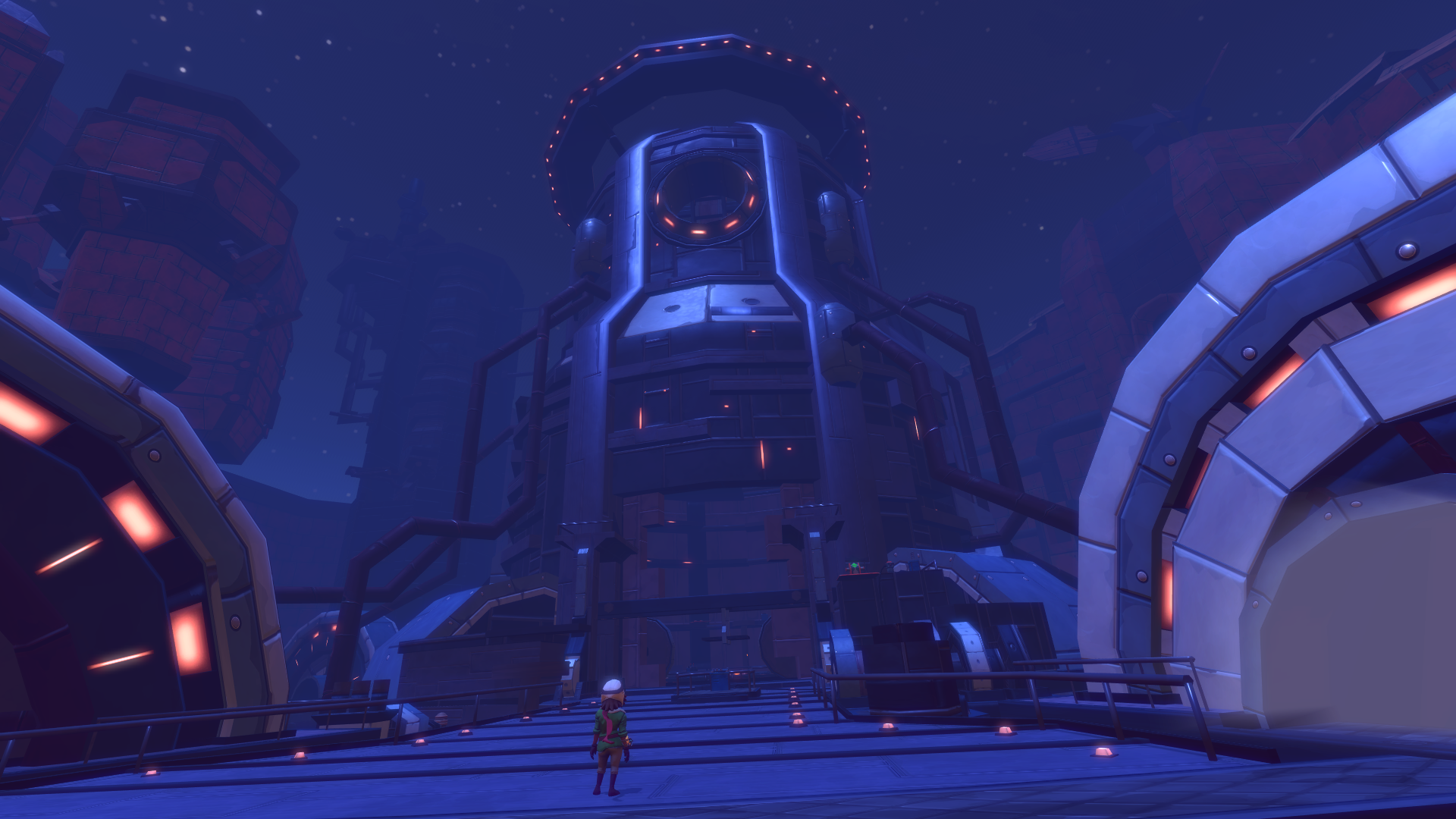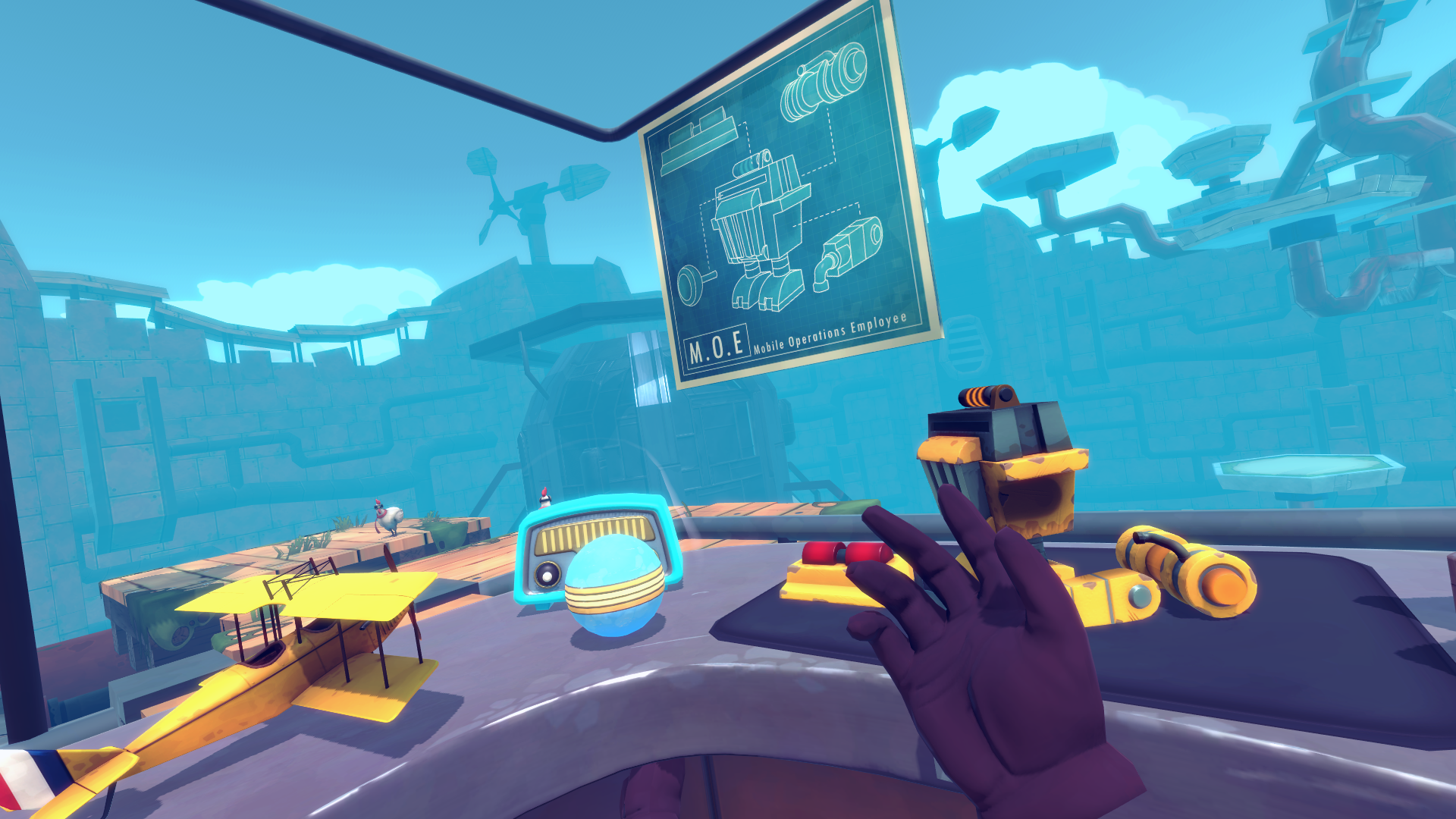You are soaring through the air, a co-pilot to your father in the family biplane. A huge laser beam streaks through the sky, damaging a wing. You are forced to land at the source of the beam, a huge metallic fortress floating in the air. Leaving the damaged craft, a red robot four times your size flies in and kidnaps your father. You are left to explore this prison of machines and robots, helping whomever you can while searching for your lost parent. This is how Wayward Sky, an upcoming PS VR adventure game, begins.
Developed by a small developer out of Washington named Uber Entertainment, the game is labeled as “A Look And Click VR Adventure” in its opening moments. It is an apt description, but what it really amounts to is a third-person platformer with puzzles and occasional first-person interactions.
Wayward Sky has a cartoony appearance, with colorful robots and clean environments. The camera is usually third-person, positioned above you, and somewhat distant from the game’s protagonist, Bess. You move her through a miniature world, exploring sections of this floating fortress, from a perspective similar to Lucky’s Tale for Oculus Rift.
There are moments of gameplay and during the story where it shifts to Bess’s point of view in first-person, where you actually feel the size of the robots menacing you and the enormity of the fortress around you. Those rare moments are where Wayward Sky feels like a game truly capitalizing on the potential of VR.
To control Bess, using the Move motion controller, you point to a spot and pull the trigger to have her go there. If you point to a machine, the machine will be highlighted with a white outline and Bess won’t just walk over there, but also interact with it. Visually in the game, you see your pair of Move controllers as something like steam-punk flashlights, though only one can be used to control Bess. There are puzzles to solve in these environments, moving platforms and activating ziplines, usually amounting to figuring out how to get to one place or another.
When you interact with machines, such as turning something on or dealing with an obstacle, that’s when the game switches to the aforementioned first-person perspective. Your gizmo Moves are now replaced with Bess’s leather gloves. In these situations, you have both of your hands, but it is hardly necessary; the puzzles in these moments are simple.
You can also play the game with PlayStation’s standard Dual Shock 4 as well, with the Camera picking up it’s light and using it as a less-accurate motion controller, which is likely why Uber made the game really only needing one hand.
In a larger sense, the flow of the game is moving Bess from one “room” to another, working with the machines there to either defeat an obstacle or find a way forward. In this way, you explore one section of the fortress at a time, making your way through five such levels. There are some collectibles to find throughout, which adds an extra layer of play as you traverse these environments. While you can look around for immersion, or hunt for the vaguely hidden secrets, the core gameplay is focused on what is right in front of you, amounting to not-quite 180 degrees of play space.
There is more to the story of Wayward Sky than Bess’ search for her father as well. There are flashbacks to life on the farm before the eventful flight that kicks off the game, where you learn details about their relationship and their past. In the fortress, you are facing the villain Thaddeus, the son of the inventor who built this fortress called Icarus. There are a few unique robots with names and personalities that either help or oppose you, different than the mindless robots that are obstacles in the levels. There are short sequences between levels akin to a machine puppet show revealing the history of Icarus and how Thaddeus became a villain. The dialogue is simple and charming, but the storytelling methods with the flashbacks and puppet shows are more developed.
There is a charm to the game, exploring this cartoon world, hearing Bess’s comments when she succeeds, and listening to the robots’ cute voices. The steampunk-esque machine-filled pulp adventure aesthetic is enjoyable, and the puzzles work. It is a title that is approachable, something for kids or for parents to play along with them — seemingly built with PS VR being a lot of people’s first foray into VR in mind.
There are moments that make you smile, whether it is a fun line of dialogue, when you beat certain puzzles, or from the machine-aesthetic, whether it is the inventive puppet show or even a steampunk arcade game present as an added distraction.
But, despite all of that charm, it feels like the game isn’t fully formed. There is no real combat or challenge in the game. The puzzles never get difficult and they feel repetitive. And except for a few first-person interactions, the game doesn’t really use virtual reality well: there aren’t any 360 degree puzzles, the camera blinks from room to room, so you don’t have to look around much, except for hidden collectibles. And with only five levels, you will be done in about three hours — a bit longer perhaps if you really take your time or replay levels to get collectibles you missed.

